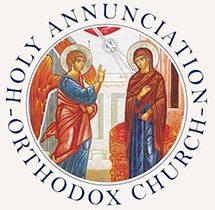Orthodoxy Is . . .
The Orthodox Church is:
- the oldest Church in the world, although many Americans are unfamiliar with it.
- One, Holy, Catholic, and Apostolic, having an unbroken tradition from Jesus Christ and the Apostles to today.
- the Church of many of history’s greatest theologians, scholars and writers — people like John Chrysostom, Jerome, Basil the Great, John of Damascus, Dostoyevsky and Alexander Solzhenitsyn.
- sometimes referred to by any number of its “ethnic” titles such as Greek, Russian, Serbian, Syrian, Romanian, Bulgarian, etc.
- often known as “The Church of the Martyrs,” so high is the commitment of many Orthodox Christians to Christ and His Church. In the twentieth century alone, more than 20 million Orthodox Christians have given their lives for their faith, primarily under communism. Orthodox Christians continue to suffer persecution in the Middle East to this day.
A Brief History Lesson
Orthodox literally means “true worship” or “true belief,” and is a name that describes nearly all of Christianity in the first ten centuries of Church history. We are Orthodox because we subscribe to the Orthodox teachings defined in the Bible, the Seven Ecumenical Councils, and the writings of the Early Church Fathers. Our basic statement of faith is the Nicene Creed, and the Bible plays a prominent role in our worship, beliefs and piety.
The Orthodox Church is the first Christian church, the Church founded by the Lord Jesus Christ and described in the pages of the New Testament. She is the only Christian church whose history can be traced in unbroken continuity all the way back to Christ and His Twelve Apostles.
Incredible as it seems, for nineteen and a half centuries, she has continued in her undiminished and unaltered faith and practice. Today her Apostolic doctrine, worship and structure remain intact. We worship using liturgies over 1500 years old and hymns of similar ancient origin. The Orthodox Church maintains that the Church is the living body of Jesus Christ.
Many are surprised to learn that for the first 1,000 years of Christian history the Eastern and Western Churches were united in one conciliar body of bishops sharing the same faith. It was in the eleventh century that a disastrous split occurred, resulting in the Western Church under the Pope of Rome separating itself from the Orthodox Church. The Pope sought to establish himself over all of Christendom and finally succeeded in the West. But the rest of the Church emphatically rejected this innovation, as the tradition of the Church has always held that there is no “universal head” apart from Jesus Christ himself.
But What is the Real Difference?
One writer has compared Orthodoxy to the faith of Rome and Protestantism in this basic fashion:
“Orthodoxy has maintained the New Testament and Early Church tradition, whereas Rome has often added to it and Protestantism subtracted from it.”
Throughout the centuries, the Orthodox Church has steadfastly maintained the Apostolic faith “once for all delivered to the saints.”
She understands the clergy as servants of Christ and His people – not a special privileged class. She has preserved the Apostles’ doctrine of the return of Christ at the end of the age and of the last judgment and eternal life. She continues to encourage her people to grow in Christ through union with Him. In a word, Orthodox Christianity simply does not change!
